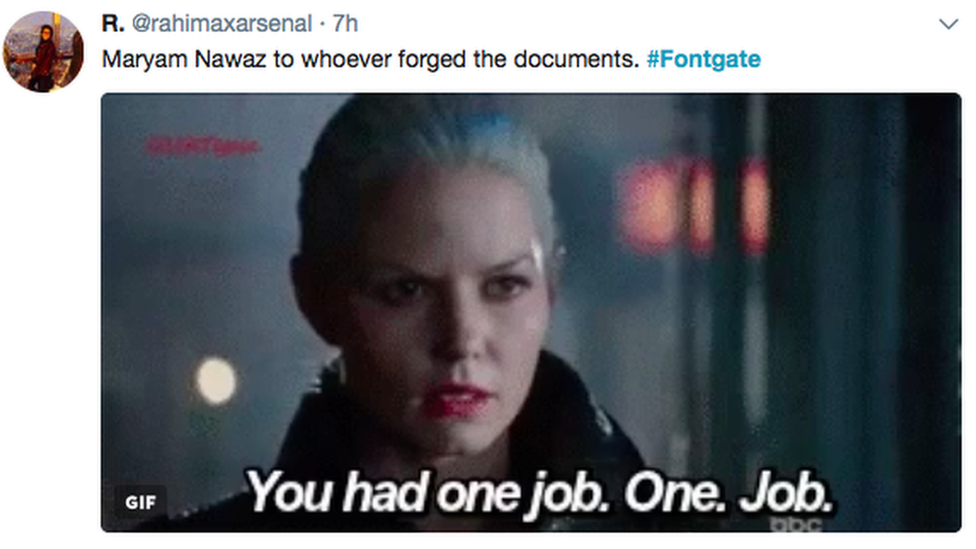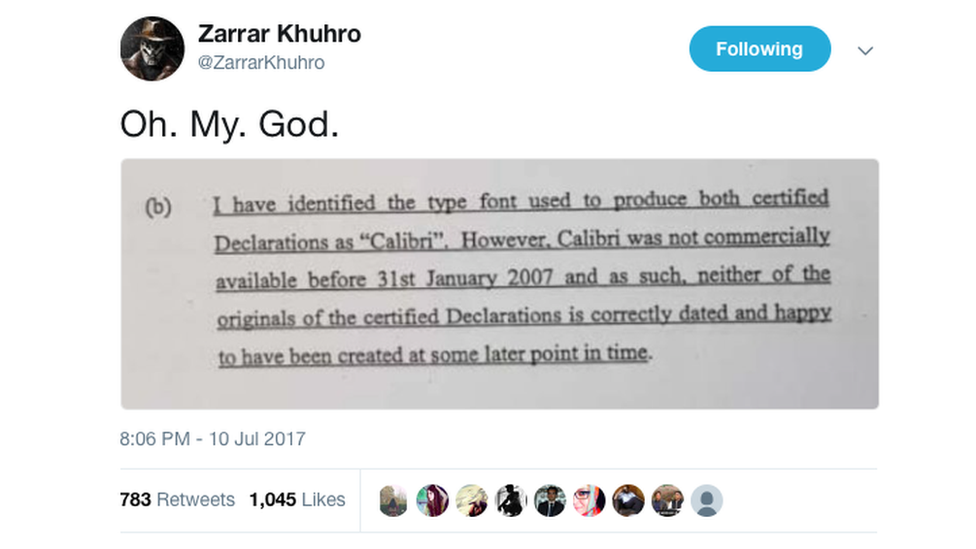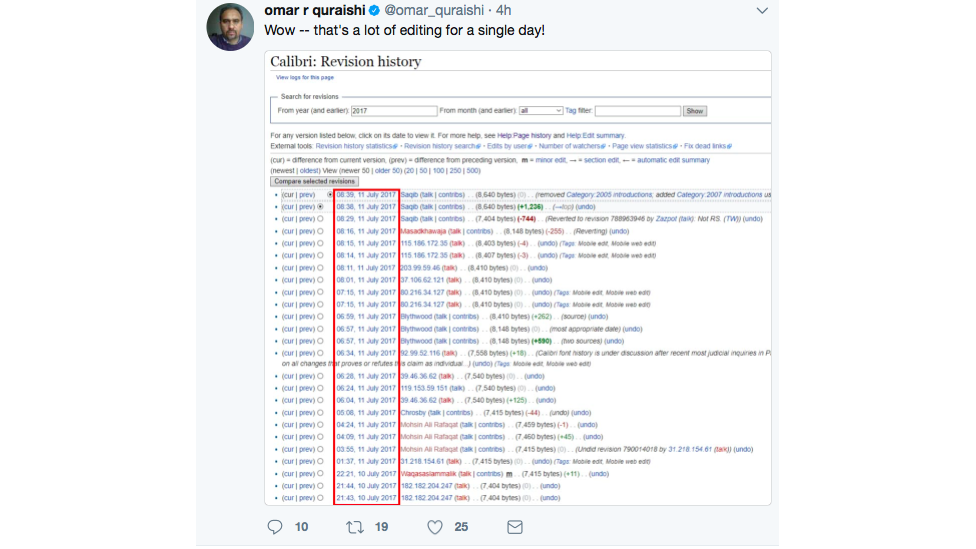Pakistani corruption case hinges on a font
- Published

Doubt has been cast on a key document at the centre of a corruption inquiry in Pakistan because of the use of a particular typeface. And Twitter users are poking fun at Prime Minister Nawaz Sharif and his daughter Maryam Nawaz using the hashtag #FontGate.
The social media campaign is just the latest twist in a story that has gripped Pakistanis.
The ongoing corruption inquiry is part of the fallout from last year's Panama Paper leaks, which has consistently been one of the most discussed topics online in Pakistan. It could end with the disqualification of the prime minister, although he has claimed the allegations are politically motivated.
Documents obtained by the International Consortium of Investigative Journalists last year revealed details about offshore companies connected to a number of high profile political figures - including Sharif. He wasn't actually named himself in the leaks - but a number of his children were linked to offshore firms that owned four luxury central London flats.
Opposition figures in Pakistan allege the money used to buy the flats was earned through corruption and a team of investigators including members of the country's intelligence services and financial regulators have been looking into the allegations.
One key line has been to establish who was the "beneficial owner" of the companies holding the central London flats - in other words, who they really belonged to.
Documents from the Panama Papers suggested the beneficial owner was the Prime Minister's daughter Maryam Nawaz - who is widely seen as her father's political successor.
However, she has claimed she was only a trustee - and that her brother was the beneficial owner. While Maryam Nawaz is considered a possible future Prime Minister, her brother is a businessman with no apparent political ambitions. To prove her point, she produced a trust deed signed by both her and her brother dated February 2006.
But the team investigating the case say they have spoken to a British forensic expert who says the document was typed in the Calibri font - despite the fact that Calibri wasn't commercially available until 2007.
As a result they allege the document is "fake" or "falsified" and submitting it was a "criminal offence" by Maryam Nawaz.
Maryam Nawaz has denied any wrongdoing. But that, of course, didn't stop Pakistanis on Twitter from going on the offensive:


Memes like this were used to mock Maryam Nawaz
Typography expert Thomas Phinney, who has testified in a number of cases relating to forged documents, told the BBC that while a beta version of Windows 2007 containing Calibri was technically publicly available from 2004, it was "highly unlikely" that it would be downloaded by ordinary computer users.
It's unclear if Calibri was included as part of any pre-2007 beta releases of Microsoft Office which were more widely disseminated - but Phinney says that using "pre-released software is not the kind of thing your average person does".
Lucas de Groot, the inventor of the Calibri font, agreed. He says over the years he has been asked for information about when the font was released in relation to more than a dozen cases of alleged fraud. He told the BBC that beta versions were generally only used by "tech geeks" rather than normal companies or government officials.
Nevertheless, the claim that the font proves the document is false could well be contested by Maryam Nawaz.
Adding to the mystery, Twitter users noticed that the Wikipedia entry for "Calibri" has apparently been repeatedly edited following the revelations.

The Prime Minister, Maryam Nawaz, and her brothers have consistently denied the allegations against them. Maryam Nawaz tweeted: "report rejected. Every contradiction will not only be contested but decimated in SC [Supreme Court]".
A panel of three Pakistani Supreme Court judges will begin deciding what action to take based on the investigation's report from next week.
Blog by Secunder Kermani
You can find BBC Trending on Facebook, external or follow us on Twitter @BBCtrending, external. All our stories are at bbc.com/trending.